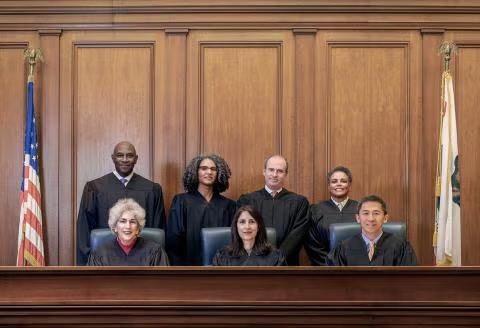CA Supreme Court Delivers Bombshell Ruling — Even Harder Now for Employers to Classify Workers as Independent Contractors
Determining whether a worker should be classified as an employee or independent contractor has always been a challenging task that frustrates our clients. There are a variety of legal “tests” that are used in different contexts in order to make that determination. A worker can be considered an independent contractor by one state agency but an employee by another.
For example, if the IRS were auditing a business, the IRS would use a “20 Factor Test” that examines the degree of behavioral, financial, and relationship control the business has over the worker and the work. If the California Labor Commissioner were conducting the audit, they would use a different test — known as the “economic realities test” — that examines 11 different factors focused on whether the worker or the business controls the means and methods of the work. In other circumstances, such as workers’ compensation, unemployment insurance, or Franchise Tax Board audits, still other tests are used. The result is a complex web of different rules and tests that leave California businesses with no clarity on a fundamental employment issue.
Well, things just got worse.
The Dynamex Decision
The California Supreme Court just issued a watershed opinion in Dynamex Operations West, Inc. v. Superior Court and announced a new “ABC Test” for analyzing whether a worker is an independent contractor or employee. According to the Court, under this new test all workers in California are presumed to be employees unless the hiring business demonstrates that the worker satisfies three conditions: (A) the worker is free from the control and direction of the hiring business in connection with the performance of the work; and (B) the worker performs work that is outside the usual course of the hiring entity’s business; and (C) the worker is customarily engaged in an independently established trade, occupation or business when performing work for the hiring business.
Wow. Read that above paragraph again and let it sink in.
Now, under California law, for a worker to be considered an independent contractor, that worker has to have an independently established trade, occupation, or business (i.e., the worker must look like a vendor and have other clients). That worker must be in a different line of work than the hiring business (i.e., a plumber coming to do work at a tech company). That worker must be free from the control and direction of the hiring business (i.e., again, that worker must look like a vendor who has its own business and decides for itself what work to do and how to do it). It is the hiring business who must prove all three of these things. If the hiring business fails to prove just one of these factors, the worker is an employee.
Why It Matters
Why is that such a big deal? If the worker is an employee, the hiring business has to pay payroll taxes on the payments made to the employee. The hiring business has to provide workers’ compensation insurance to that employee. The hiring business has to reimburse the employee for miles driven for work and for all other business-related expenses. The hiring business has to offer paid sick leave, paid family leave, and a host of other mandatory benefits to the employee. If the worker is paid hourly, the hiring business has to offer meal and rest breaks to the employee and pay overtime. The hiring business can be liable for harassment, discrimination, retaliation, and all of the other legal rights and claims made available to employees. In short, the classification of a worker as an employee rather than an independent contractor imposes significant financial costs and legal risks on the hiring business.
A Tiny Bit of Good News?
If there is one possible, tiny piece of good news in the Dynamex decision, it’s that the California Supreme Court explicitly said that it’s decision applied only to claims brought for wage and hour violations. The Court specifically expressed no opinion on the question of whether its new ABC Test should apply to other types of employee claims. However, given the reasoning of the Court as painstakingly elaborated in its 80-plus page opinion, it is likely that the ABC Test will apply to harassment, discrimination, and retaliation claims brought under the California Fair Employment & Housing Act (“FEHA”) and other statutory claims that express a strong public policy. How far the ABC Test goes in California won’t fully be known until future litigation settles the question (or the California legislature steps in to clarify the issue statutorily).
What Employers Should Do Now
The California Supreme Court’s decision in Dynamex is life-changing for California employers. The net effect of this decision is that now, in California, it is almost impossible for a business to classify a worker as an independent contractor. Legitimate outside vendors will still be considered independent contractors, but workers who come into a business to perform the work of that business will almost always be employees under this new ABC Test. And the burden is now squarely on the hiring business to defend its decision, should the issue arise.
California employers should therefore conduct an audit of each existing independent contractor and examine whether the worker can legitimately qualify as an independent contractor under the new ABC Test. Employers who improperly classify workers as independent contractors will face huge liabilities (e.g., unpaid payroll taxes and penalties, unpaid withhold taxes and penalties, penalties for failure to provide meal/rest breaks, unpaid premium pay for overtime, penalties for failure to provide workers’ compensation insurance to the worker, PAGA penalties) plus fines between $5,000 and $25,000 per violation. Even one misclassified worker can lead to a huge liability, so we encourage employers to undertake these audits sooner rather than later. And, going forward, we encourage employers to consult with competent, experienced employment counsel whenever they are considering bringing on a new independent contractor.
You can read the Court’s opinion in Dynamex Operations West, Inc. v. Superior Court here.
Insights
OUR BLOG


